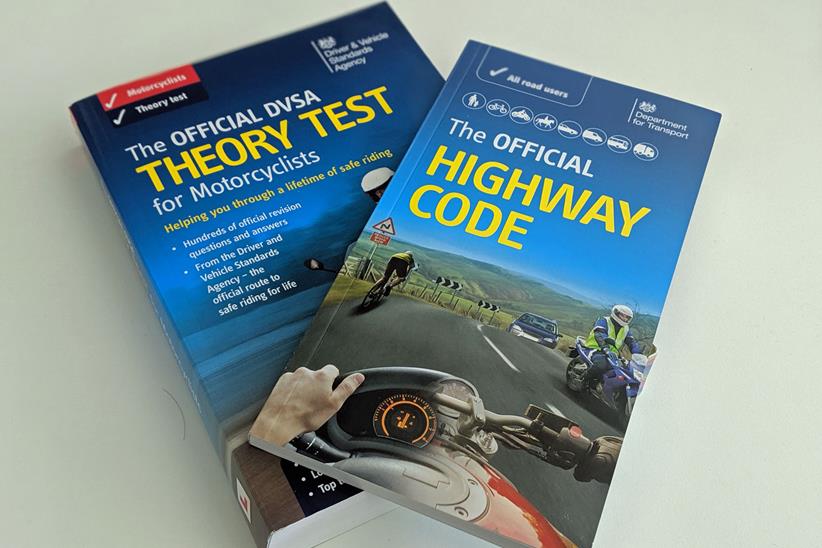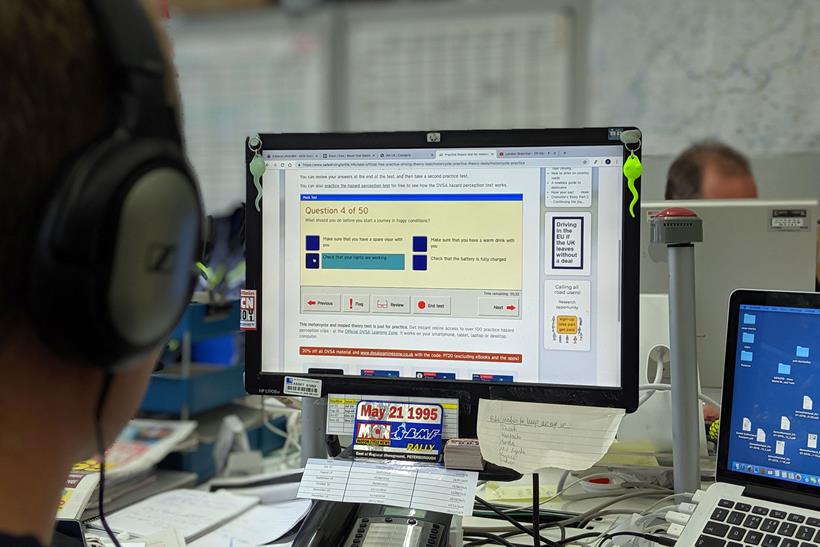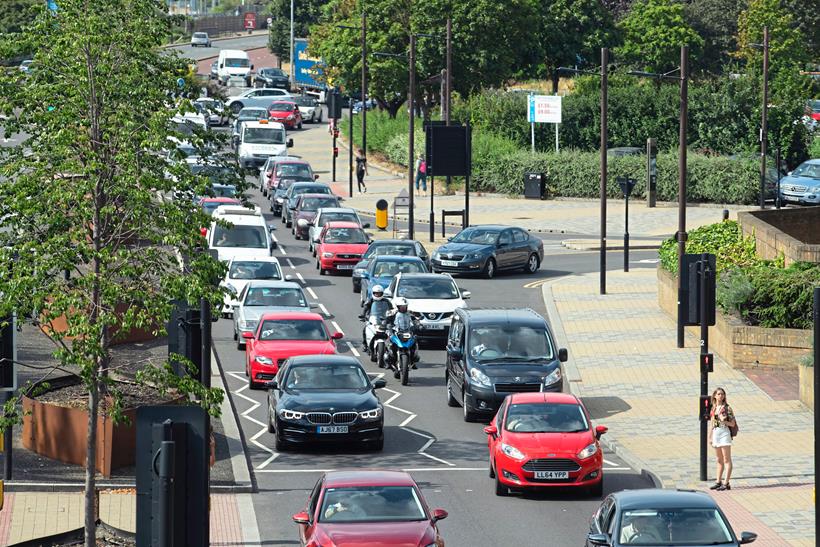How to pass your motorcycle theory test first time before you move on to mod 1 and mod 2 practical tests

When you’re learning to ride a motorbike, you’ll need to pass the motorcycle theory test. This is the second element of passing your full motorbike licence, occurring before the two practical modules and after the CBT.
To pass the motorcycle theory test, you need a provisional motorcycle licence before booking, and this must be taken along to the test centre to be used a photo ID. If your licence doesn’t have a photocard portion you’ll need another form of identification.

Here MCN explains what to expect from the theory test and how to prepare for it.
Jump to:
How hard is the motorcycle theory test?
To a large extent, this depends on how much research you’ve done, whether you’ve passed your car theory test and how well you know the rules of the road.
The theory test is made up of two elements – a multiple choice test and a hazard perception test. Both are conducted on a computer, at specialist test centres.
To practice the motorbike theory test, the best thing to do is take practice motorcycle theory tests online and get familiar with the official books the test examines you on: The Highway Code, Know your traffic signs and Riding – the essential skills.
Once you think you’re ready, you can book your motorcycle theory test online.
The motorbike theory test stage one: multiple choice
You’ll have 57 minutes and will be asked 50 multiple-choice questions – though you don’t have to use the full allotted time.
When you arrive, you’ll be informed you can’t take personal items in with you and offered a locker to keep them in. Examples are earphones, smart devices, watches and bags. A member of staff will check what you have on your person, and it’s worth noting you’ll be breaking the law if you cheat in the theory test.

Before the test begins you can expect instructions on how the test will work and a chance to try out some practice questions to familiarise yourself with the screens and software.
When you begin, you’ll get questions with a set of possible answers. The format will be based on a case study, which takes the form of a short story. For example, you may watch a film and then be presented with a number of questions to answer.
The whole test should be about a real life situation you could come across while riding.
If you’re struggling with a particular question, you can ‘flag’ it and come back later to have another go. You’re also able to change your answers at any time during the test.
To pass this portion of the theory test, you’ll need to score 43 out of 50.
At the end of your test you’ll get a three-minute break before you move on to the hazard perception test…
The motorbike theory test stage two: hazard perception
The hazard perception test consists of 14 video clips, each about a minute long, showing real riding situations. You have to identify the hazards that appear on the screen as they occur in front of you.
Each clip contains at least one ‘developing hazard’, which you’ll get points for spotting as soon as they occur. One of the clips will feature two of these hazards. A ‘developing hazard’ is defined as something that would cause you to take action, such as having to change direction or slow down.
You are scored on how quickly you identify the hazards. You can score a maximum of five points per hazard, and won’t lose points if you get it wrong. Don’t simply click away, though – you won’t score a thing if you click continuously in one place or in a set pattern.

Unlike the multiple choice test above, you only get one attempt at each clip and you can’t change your response once entered.
You can practice for this test by downloading an app from this page. You can also test yourself whenever you are on the road – scan the street for potential hazards and see how many you can spot.
Be aware that you won’t have a cursor on the computer when you take this part of the theory test – it’s about timing rather than the direction of the hazard.
You’ll need to score 44 out of 75 to pass this part of the motorbike theory test.
Passing or failing the motorbike theory test
You will find out if you have passed on the day of your test.
If you’re successful you’ll receive a letter saying so, and if you’re over 24 you’ll then have two years to take both modules of your motorcycle test. If you don’t do this, you’ll need to pass the theory test again.
If you fail your motorcycle theory test, you’ll get a letter to that effect. It will outline the parts you struggled with so you’ve got a chance to get extra practice in. You will then need to wait three working days before booking your test again.

FAQs
-
Is it easy to pass the motorcycle theory test?
The totally depends on how prepared you are. If you go in blind, you might struggle, but do some research and you should be able to pass easily.
-
What is the pass mark for the motorcycle theory test?
The first part requires at least 43 out of 50 correct answers, while the second stage requires 44 out of 75.
-
How many questions can you get wrong on the motorcycle theory test?
As above, you can get six wrong on the first stage and 30 wrong on the second.
-
Can you take the motorcycle theory test online?
No, you must visit a test centre, although you can train for it online by completing a practice exam.





